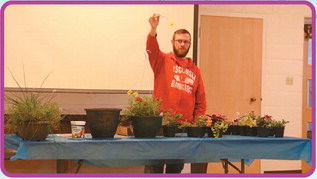Gcoiden&i att&us tip& a pfUwti&i


By Valorie Brecht
As spring starts to come into bloom, people are thinking about decorating their yards and porches with colorful flowers.
...

By Valorie Brecht
As spring starts to come into bloom, people are thinking about decorating their yards and porches with colorful flowers.
...